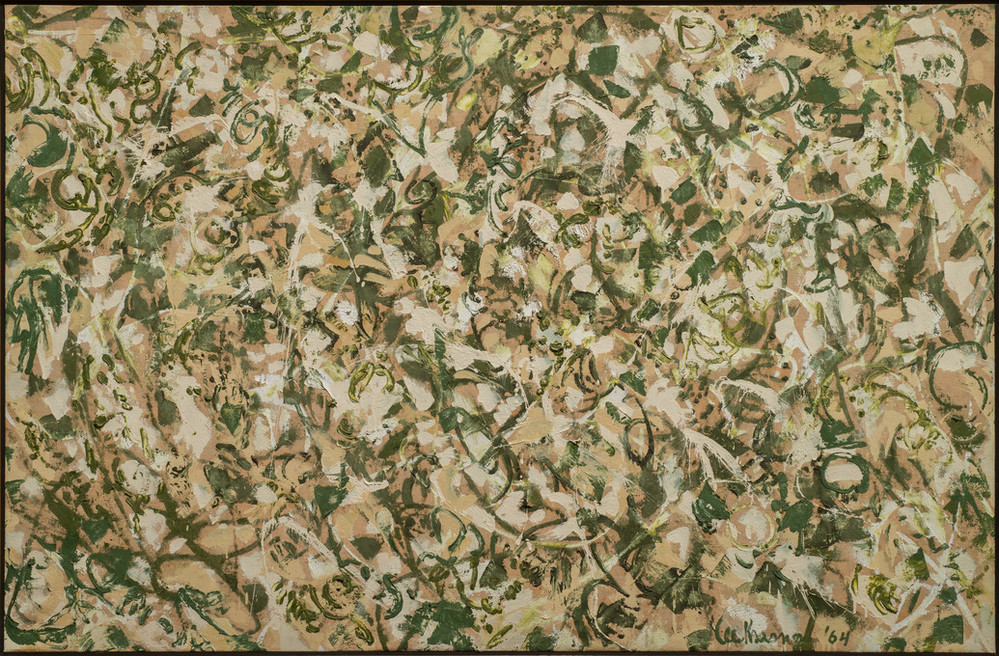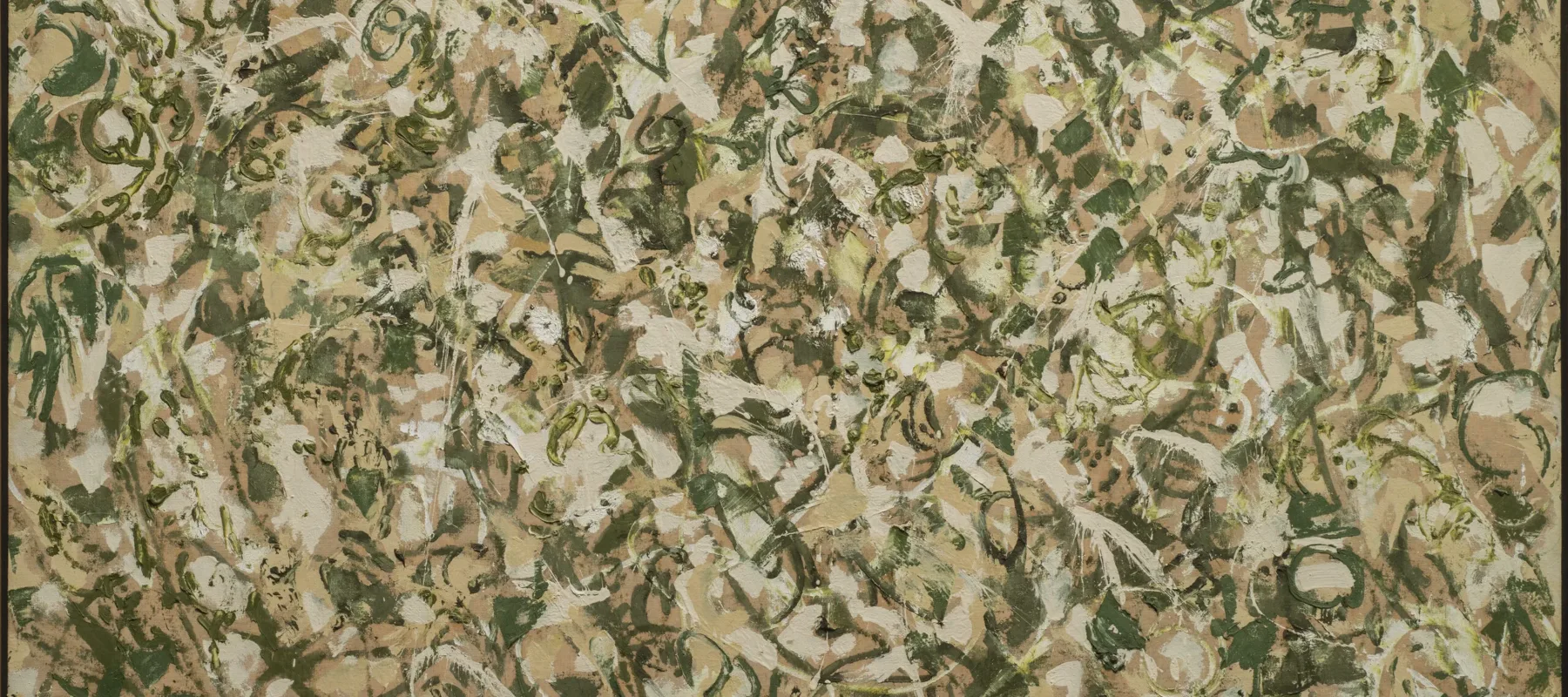Impress your friends with five fast facts about Lee Krasner, whose work is on view in Pathmakers: Women in Art, Craft, and Design, Midcentury and Today through February 28, 2015.
1. Chicken or the Egg?
Krasner introduced her husband, artist Jackson Pollock, to influential artists and critics including Willem de Kooning and Clement Greenberg—not the other way around. Krasner helped create the “all-over” technique inspired by Piet Mondrian’s “grid,” which influenced Jackson Pollock’s revolutionary “drip paintings.”

2. Home Springs Eternal
The title of The Springs refers to the town on Long Island where Krasner and Pollock lived and worked. After Krasner’s death, the house became The Pollock-Krasner House and Study Center. Paint used by both artists can be seen on the floorboards of their barn-turned-studio.
3. Anonymous was a Woman
Signing much of her work as “LK” or not at all, Krasner attempted to escape presumptions about femininity in the work of “women artists” and her ties to Pollock. In attempting to avoid identity politics, Krasner navigated her roles as woman, wife, and artist.
4. Waste Not, Want Not
Between 1953 and 1955, Krasner moved toward a collage style, creating new works by cutting apart discarded canvas of her own and Pollock’s, pasting the pieces on large color field paintings previously exhibited at Betty Parson’s New York gallery. Influenced by Matisse, Milkweed (1955) is a stunning example.
5. Go Figure
Known primarily for her contributions to Abstract Expressionism, Krasner did paint figural work early in her career. Though much of it has been destroyed, two self-portraits (1929 and 1930) remain from her time at the National Academy of Design in New York City.
